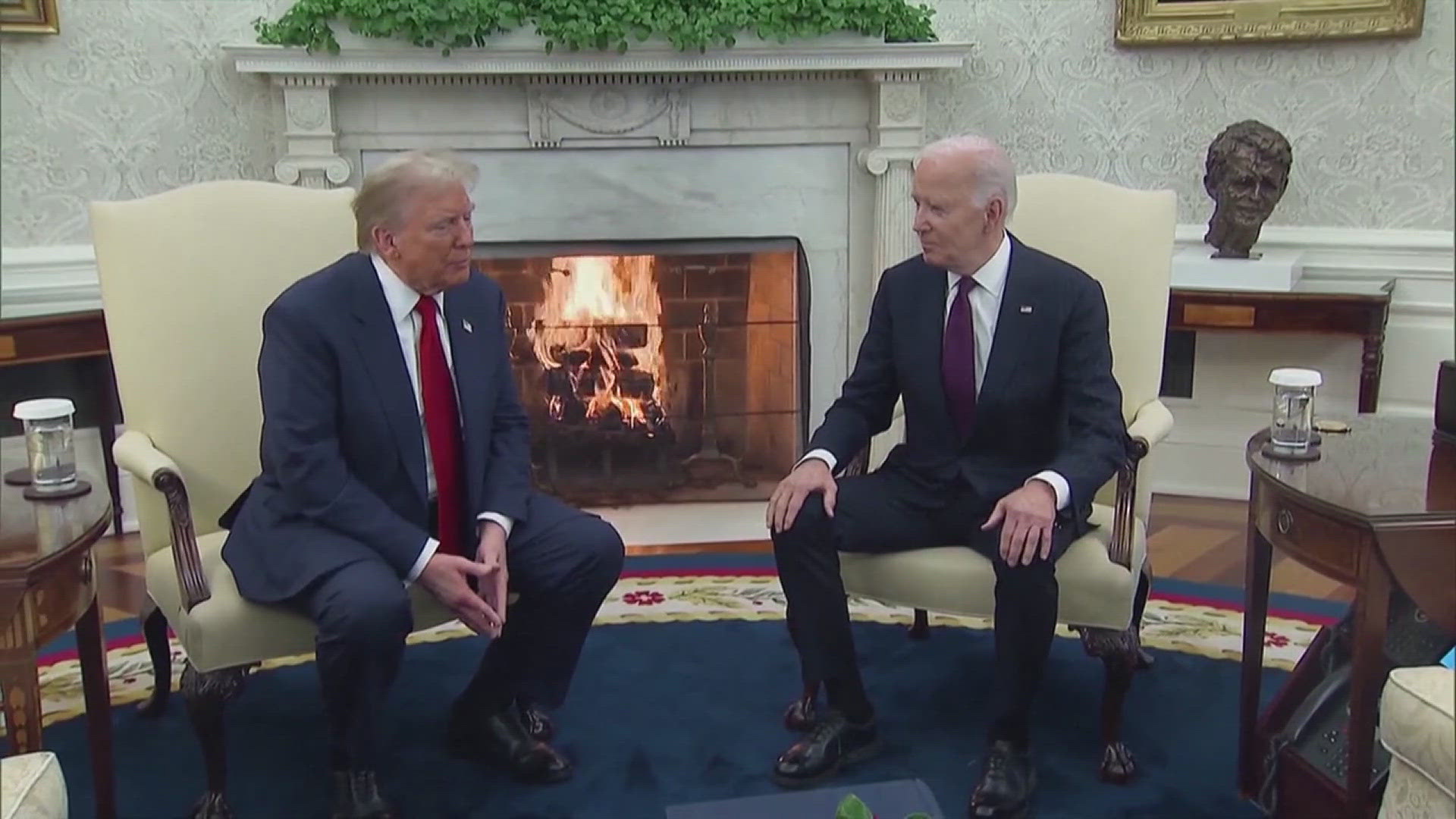Iowa Governor Terry Branstad says before it was changed, he met the deadline for Iowa to make its decision about how to administer part of the Affordable Care Act.
The day before the November 16 deadline, the federal government extended the deadline to December 14. States have until that date to decide whether they will administer their own health insurance exchange, partner with the federal government to run the exchange or leave it to federal officials to manage.
The health insurance exchanges are lists of insurance providers from which small business owners and uninsured individuals can shop to get health care coverage under the Affordable Care Act, commonly called “ObamaCare.”
Days before the deadline, Governor Branstad complained that Iowa leaders weren’t getting answers to their questions from the federal government.
In a letter sent to Health and Human Services Secretary Kathleen Sebelius, Branstad said Iowa has met deadlines set by the feds and that the state will continue to work to create its own exchange. Branstad said he still needs answers to 50 questions to help the state make good decisions about how best to establish the exchange.
These are the 50 questions Branstad included in his letter:
1) Please provide a complete list of regulations that will have to be reviewed, revised and re-opened for public comment prior to implementation as a result of the Supreme Court ruling (e.g., the Medicaid eligibility regulations, exchange regulations related to interface with Medicaid). What is the schedule for re-issuing these regulations?
2) When will final rules be issued on essential health benefits, actuarial value and rating areas?
3) The federal government has already extended deadlines for applying for Level 1 and Level 2 Exchange Establishment funding into 2014. Can we expect extensions of the deadlines for other areas of implementation given the uncertainty caused by the Supreme Court ruling and the linkage between Medicaid expansion and exchange eligibility and enrollment functions? In addition, will the deadlines change for states implementing a partnership exchange? Will the deadlines be extended for states implementing a federal exchange? Can you confirm that states will be able to switch from a federal model to a partnership or state model until 2019 and that funding will be available to enable that transition?
4) When will the details of the federal partnership options be available? These cannot be considered as an option without details including cost estimates and how state and federal systems are expected to link. How will the long term funding of the federally-facilitated healthcare exchanges be sustained?
5) States considering a state-based exchange need to know whether there will be a charge to use the federal data hub, advance premium tax credit/cost-sharing reduction service, risk adjustment and transitional reinsurance programs. Will there be a charge? And, if so, how much will it be?
6) When will states learn the details of the operational systems for a federal exchange? The procedural, technical, and architectural requirements for linking to the federal exchange have not been released. It is not feasible to know if a state-based exchange is better for our citizens until we know what the contents of a federal exchange will be.
7) When will information from the establishment of a federal exchange be available for states to use if a state opts to build its own exchange? It is costly for each state to have to start from scratch and still not know how interfaces will work.
8) If states choose to build a state-based exchange, what dollars will the federal government contribute now and in the future? For the federal exchange states, when will the regulations regarding the imposition of taxes on a state’s insurers be released?
9) It has been widely reported that Congressional leaders who have to appropriate money will seek to defund exchanges. Can you explain how the enactment provisions of the law allow the Executive Branch to continue to fund exchanges without Congressional action to appropriate money?
10) What happens to a state that has taken exchange planning and implementation grants if their exchange is not financially viable after 2015? Can a state refuse to increase taxes on either its residents or insurers, thus putting the financial underpinning of an exchange at risk? What penalties does the federal government envision in this case?
11) What happens if a state accepts grant money now to begin to build a state exchange, and subsequently determines that a federal exchange may be better? Will the federal government claw back these grant dollars from the states?
12) The Congressional Budget Office (CBO) has pointed out a provision in the law that reduces exchange subsidies after 2018, which means fewer and fewer people will qualify for subsidies, and the people who do qualify will get a smaller and smaller subsidy. Does the Administration support that change, and if so, how would you pay for it? If you do not, why do you think people should be forced to buy insurance if federal subsidies are shrinking?
13) Alongside the considerable challenge of greatly expanding the Medicaid program, states are charged by the PPACA with creating a single, seamless point of entry for all of the insurance affordability programs affected by the Act–Medicaid, the Children’s Health Insurance Program (CHIP), the Basic Health Plan (where offered), advance tax credits for individual and Small Business Health Options Program (SHOP) exchange enrollees. This leaves another major question on the table. What about all of the other social service programs?
14) In order to minimize disruptions to a state’s insurance market, The Office of Personnel Management (OPM) is required to certify multi-state plans that must be included in every exchange. When will the rules be released detailing the requirements and timeline for multi-state plans? How OPM structures these rules can be very disruptive to a state’s insurance market.
15) Does the federal government intend to maintain high risk pools and how will they be financed? What actions will they take in a state that has opted not to operate a high risk pool or an exchange?
16) How do states with a federal exchange ensure that Web Based Entities (WBE) are an option in their state?
17) Will HHS and the United States Department of the Treasury offset the advance payments of premium assistance tax credits to issuers for an applicant’s outstanding tax, alimony, and/or child support debts?
18) Will state-based exchanges have the flexibility to retroactively adjust past due premium amounts for interim changes in income?
19) How will the Center for Consumer Information and Insurance Oversight (CCIO) handle Qualifed Health Plans (QHP) to Medicare transitions to prevent enrollee confusion and the potential for unpaid QHP premiums due to the enrollee not terminating the QHP timely?
20) How will CCIIO minimize the adverse impact of its overly-broad employer notice requirement?
21) What is the process/timeline for the approval of a state-specific single streamlined application (SSA)?
22) Must Iowa have a Medicaid Portal or can it use the federal portal? If the answer is that it has to use a federal portal, how does it incorporate state-specific programs (SNAP, TANF, etc.?)
23) What is the role/scope of a verification plan in a state partnership exchange? Does it require federal approval? How and when should a verification plan be submitted for federal review?
24) What will the federal government require of all the states in terms of specifications for account information/record layout/package of data elements?
25) When and how should the implementation review be submitted?
26) What are the HBE reporting requirements (HHS format? ACA 1313A?)
27) Has the Plan Management Forum been rescheduled?
28) Iowa would like to verify that the ACA will only allow “Indian status” for members of federally recognized tribes.
29) Does this flow account for the possibility that some individuals may not be eligible for the exchange (because the individual has employer sponsored insurance), but person’s income could still qualify them to be eligible for Medicaid?
30) With individuals coming into the system through the FFE, what implications are there for Iowa’s existing online application for SNAP and TANF?
31) As an individual begins the application through the federal portal, what data elements will the FFE use to identify that the applicant lives in Iowa (attestation, zip code of mailing address, zip phone of residence, etc.)?
32) At the “Transmit Account to State” point in the diagram, what are the gaps between the information that the federal hub gives Iowa and the information that Iowa needs to determine Medicaid MAGI eligibility?
33) What data will be included in the account at the “Transmit Account to State” point? If this data set has not yet been determined, when will it be determined?
34) Will the single streamlined application ask about health status (pregnancy, etc.)?
35) In the Medicaid Agency swim lane, should CHIP Eligibility be moved before “Assess for Other IAP Eligibility” step? If so, this may be useful information for CCIIO to share with other states.
36) What exactly happens at the “Assess for Other IAP Eligibility” point in the diagram?
37) What is the communication back to consumers if it appears they are not eligible for anything (insurance affordability in addition to Medicaid and CHIP)?
38) Can Iowa receive the application electronically (and thus meet the regulation that requires states to do so) through the FFE (instead of having a separate state-supported Medicaid portal)? Would using the FFE that meets the intent of the law which says that the states’ Medicaid must have the capability to accept Medicaid applications electronically?
39) Will the paper application have to reflect the data elements in the single streamlined application and then have a number of supplemental data elements that are required by Iowa, or can the state continue using the current Iowa paper joint application?
40) Iowa would like to verify that the entry point for the select group of people who are categorically eligible for Medicaid (babies born to Medicaid mothers, SSI, etc.) will remain subject to current business rules.
41) How will the business rules for Medicaid presumptive eligibility change?
42) From an education and outreach perspective, how will hospital staff get trained on the presumptive eligibility process?
43) The Blueprint roadmap lists “Navigator” under 2.6, but does not indicate it is something that could be in a state partnership model (the partnership columns are not checked). In the same roadmap, 13.3 mentions Consumer assistance and indicates it can be part of a partnership model. The draft “Design Review Modules – State Partnership Exchanges” under consumer assistance partnership shows Navigator as part of the module. It seems like there is a conflict that may need to be clarified.
44) Provide an overview of the federal Navigator program – are these actual people who will be stationed in the SPE/FFE states? Will Iowa have Navigators physically in our state?
45) Describe the role/responsibility for the federal Navigators (who are the Navigators and what will their responsibilities be).
46) How will the federal Navigators integrate with state specific in-person consumer assistors?
47) What is CMS’s/CCIIO’s vision/description of what the state must do to fulfill their obligations regarding in-person assistance?
48) In the blueprint section 4.0 (Plan Management), there are sub-sections identified as 4.5 and 4.6. However, in the guidance on what states need to prepare for in the design review for SPE, these two sub-sections are not listed. Can you clarify what the state’s responsibilities are for these two sub-sections?
49) Is there a CMS’s/CCIIO’s plan for integration between the HBE implementation and the BIP implementation?
50) Describe the role federal call centers play with regard to helping a caller obtain Medicaid (will the caller be switched to the Iowa Medicaid call center based on the area code of their call?) Describe the federal plan for education and outreach? Will marketing materials be tailored to the state? Will the state have input to the marketing materials?



